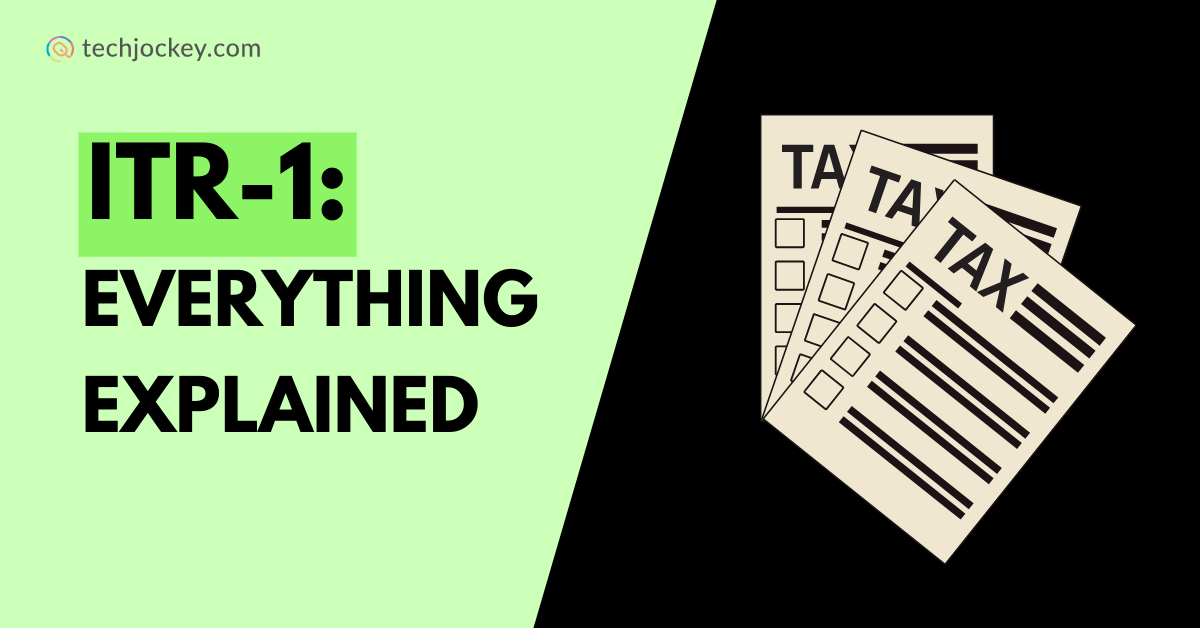
Filing Income Tax Returns (ITR) is important for every individual to keep financial records sorted. It not only has compliance benefits but also helps in applying for loans, visas, or other financial planning.
As not all taxpayers have the same income or source of income, the Government has designed different types of ITR forms.
One such is the ITR-1 form or ITR Sahaj form. It is one of the simplest and most widely used ITR forms. This blog will clear everything about ITR-1: ITR meaning, ITR-1 is for whom, and its filing due date.
Let’s begin.
ITR-1 is for salaried employees and resident individuals (not an NRI or RNOR) who earn a total income less than or equal to INR 50 lakh. It is also known as the Sahaj Form. This form is specifically made for taxpayers who have limited and straightforward sources of income.
Eligibility for the ITR-1 form is for everyone mentioned below:
In short, ITR-1 is ideal for individuals who do not have complicated income structures.
Fun fact: The word Sahaj in Hindi means simple – true to its name, this form makes tax filing quick and easy for eligible taxpayers.
As every form is designed for different taxpayers, not everyone can file ITR-1. The following are not included in the ITR-1 eligible individuals.
It is important to note that if your income is diverse, complex, or involves foreign elements, you must opt for other ITR forms such as ITR-2, ITR-3, or ITR-4, depending on your case.
Suggested Read: Breaking Down the New Rules for Income Tax in India
The last date to file ITR-1 for the financial year 2024-2025 is 15 September 2025. Earlier, the due date was 31 July 2025, but the date was extended as there were some major changes in ITR-1 done by the government.
What’s good is that you can file a belated return before 31 December 2025 in case you miss the deadline. But, you have to pay late fees and interest under section 234F.
Thus, it is best to file your ITR before the due date to avoid penalties.
Pro Tip: You can use an income tax software to make the job of filing ITR-1 easy. These third-party tax software simplify calculations, reduce errors, and help you claim maximum deductions.
Suggested Read: Income Tax for Freelancer: Self Employment Tax Benefit & Deduction in India
Final Thoughts
Salaried individuals and pensioners with simple incomes can file their income tax returns through ITR 1 or the Sahaj form.
However, you must closely keep a check on the ITR-1 eligibility criteria before filing. An incorrectly chosen ITR form can render your return invalid.
Here’s the summary:
By being a responsible taxpayer and filing your return on time, you not only perform your duty as a taxpayer but also benefit from easy loans, quick refunds, and peace of mind.
Any capital gains, earnings from a business or profession, or income from multiple house properties and lottery are not part of the ITR-1 form.
No, ITR-1 is only for residents of India.
The salary limit for the ITR-1 form is up to INR 50 Lakh, which includes salary, one house property, and other sources except lottery or horse races.
No, joint owners of any house property cannot file ITR-1; they must use ITR-2 or any other related form.
Yes, salaried employees with income up to INR 50 lakh should file ITR-1.
If you earn only from one salary, have one house property, and earn within the limit of INR 50 lakh, then you have to file ITR-1; otherwise, go for ITR-2.
ITR-1 is for salaried employees; ITR-4 is mainly for individuals with presumptive business or professional income.
Android trojan, for the unversed, is malware that poses a serious threat to mobile… Read More
Smartphones have completely transformed how we bank, making money transfers and payments quicker and more… Read More
Ever come across an AI chatbot giving weird medical tips? Or one, as hiring… Read More
Recruiting now does not occur over table-it mostly begins on a screen. This has… Read More
Did you know approximately two-thirds of total organizations who use generative AI have deployed it… Read More
How would you feel if your organization was under attack and you had no idea… Read More